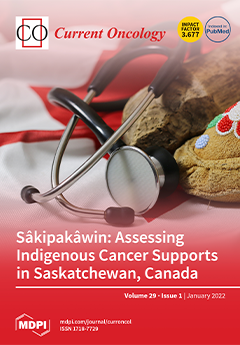Background: Patients with epithelial ovarian cancer (EOC), treated with niraparib maintenance, present with haematological and gastrointestinal toxicities. Limited data exist on niraparib safety assessment. Objective: To evaluate niraparib safety profile, as maintenance therapy, in women with platinum-sensitive EOC. Methods: PubMed and Cochrane searches were carried out up to April 2021 for randomised controlled trials (RCTs) evaluating niraparib versus placebo in EOC patients with a response to platinum-based chemotherapy. Regarding the meta-analysis, for dichotomous data, the pooled risk ratio (RR) was calculated. Results: A total of 1539 patients from three RCTs revealed that niraparib-treated patients are associated with a significantly higher risk of any grade of nausea (RR, 2.15; 95% CI, 1.86 to 2.48), fatigue (RR, 1.26; 95% CI, 1.05 to 1.52,
p < 0.00001), anemia (RR, 6.86; 95% CI, 2.54 to 18.52,
p = 0.0001), thrombocytopenia (RR, 7.02; 95% CI, 1.68 to 29.38,
p < 0.00001), vomiting (RR, 2.51; 95% CI, 1.50 to 4.19,
p = 0.0005), neutropenia (RR, 2.96; 95% CI, 1.13 to 7.73,
p < 0.00001), headache (RR, 2.08; 95% CI, 1.57 to 2.74,
p < 0.00001), constipation (RR, 2.10; 95% CI, 1.72 to 2.57,
p < 0.00001) and insomnia (RR, 2.48; 95% CI, 1.52 to 2.89,
p = 0.0003) when compared with placebo. For grade 3 or 4 adverse effects, significantly higher risk was only noted for fatigue (RR,6.25; 95% CI, 1.70 to 23.05,
p = 0.006), anemia (RR, 16.23; 95% CI, 4.86 to 54.17,
p < 0.00001), thrombocytopenia (RR, 35.12; 95% CI, 12.23 to 100.82,
p < 0.00001) and neutropenia episodes (RR, 6.35; 95% CI, 2.08 to 19.39,
p = 0.001) for those taking niraparib. Notably, incidents of adverse effects and discontinuation rates were substantially lower among patients treated with an individualised niraparib dose than those treated with the standard one. Efficacy was not reduced, and no treatment-related deaths occurred during the included trials. Conclusion: Niraparib is considered an effective and well-tolerated choice, with an improved safety profile, for the maintenance treatment of EOC patients.
Full article






